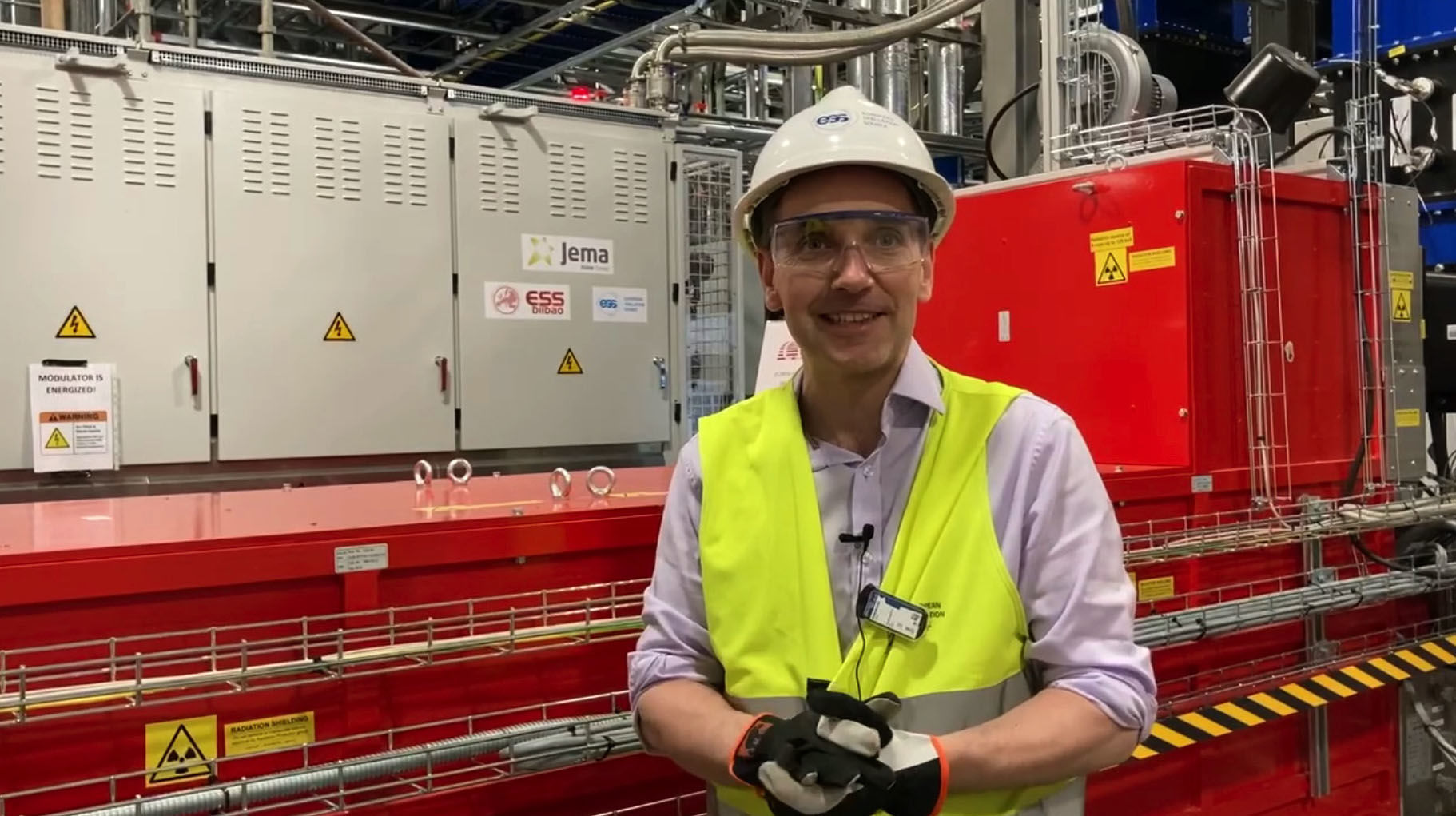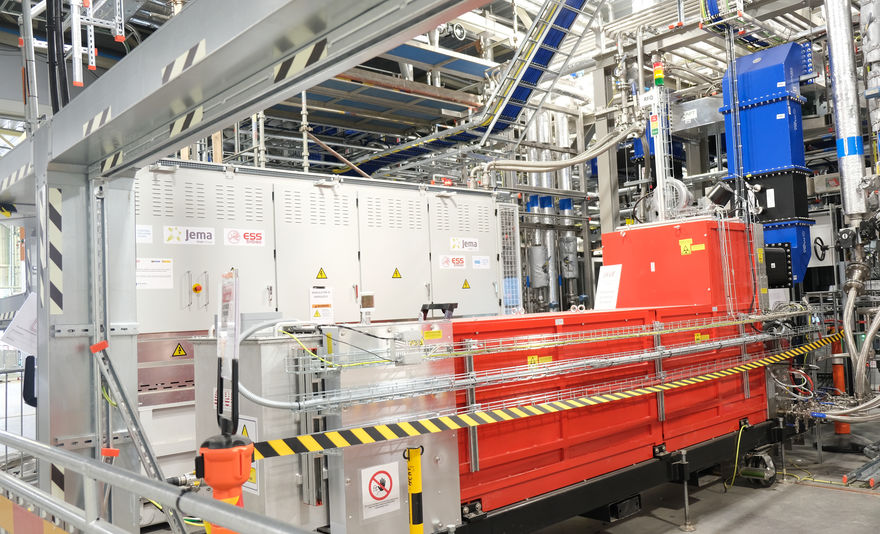
Commissioning of the RF Sources and RF distribution system has been underway on the ESS site since December 2020, as ESS gears up for RFQ beam commissioning in the summer.
In the ESS Klystron Gallery, which runs above the 600-metre-long Accelerator Tunnel for almost its entire length, you will find equipment that generates the Radio Frequency (RF) power to get protons moving in the ESS accelerator. To be able to produce neutrons, ESS needs to accelerate protons using electromagnetic fields produced by RF sources, until they gain a significant amount of energy and a velocity close to the speed of light. When this high-speed beam of protons hits the ESS Target, neutron spallation occurs.
Neutrons are then passed down beam guides, towards the various instruments where researchers will place their samples for conducting experiments using neutrons. These researchers will be able to study and probe their samples with the help of neutrons, to be able to see where the atoms are and what they are doing.
What is RF power?
RF power is produced in specialised machines called Klystrons - also known as RF sources. Powered by modulators, which are basically, very large adaptors, klystrons amplify the energy they receive from 100 watts to 3 megawatts (MW), and, with the help of waveguides, they feed high-energy RF waves to the accelerating cavities in the tunnel.
“RF is a kind of electromagnetic radiation,” explains ESS RF group leader, Morten Jensen, “It is just like what you have at home in your microwave or like visible light, the only difference is the wavelength and the frequency is not the same.
“We need RF to accelerate the beam when it's going through the tunnel – and for this we need power at the right frequency and the right wavelength,” Morten Jensen continues.
The work being done on site right now is the commissioning of the very first RF sources, generating the radio-frequency waves needed to get the protons moving.
When ESS moves into operation, we will have 62 klystrons – six for the Normal Conducting Linear Accelerator (Linac), 36 for the medium beta, and 20 high beta klystrons. Ultimately, there will be 126 klystrons. We will also have nine medium beta modulators, each powering four klystrons, and at present, a call for tender is out for the high-beta modulators.
Testing the RF system prior to producing protons for acceleration is important in making sure it is ready for operations.
Conditioning of the klystrons, producing high power RF to the waveguide system on the Gallery side, has been successfully completed and right now we are sending RF down to the waveguides in the tunnel, with the aim to maintain a stable voltage and phase, suitable for the cavities inside the tunnel.
Once this first part of the RF system is fully tested and commissioned, it will be handed over to operations – then high-power testing of the next section, the Drift Tube Linac (DTL), will follow. The RF team will gradually move their way through the rest of the Gallery, where a total of 156 RF systems are to be tested.
A complex and high-tech system
The RF system is complex, with multiple sub-systems, interfaces and infrastructure around it.
Head of the ESS Accelerator Division, Mats Lindroos, elaborates: “Complexity here is enormous. You have the combination of not only these RF sources, but also the power supply that drives them, called modulators, and all the controls, the cooling system and the networks needed to synchronise and make sure all this works together.”
He adds that “it is only when everything in this long hall is complete and ready for operations, that we can start sending beam on to the ESS Target”.
The first part of the Accelerator, known as the Normal Conducting Linac (NCL), contains the most advanced and high-tech part of the equipment. It will operate at room temperature, as opposed to the next part of the Accelerator – the superconductive linear accelerator (linac), which will be cooled to cryogenic temperatures – 2 Kelvin, or -271 degrees Celsius.
A staged approach to commissioning
Commissioning of the ESS linac is performed in stages, starting with the NCL. The NCL is, in turn, commissioned in a step-by-step approach, where the first goal is to put beam through from the Ion Source and the Low Energy Beam Transport (LEBT) to the Radio Frequency Quadrupole (RFQ), with full 3 MW RF power.

























